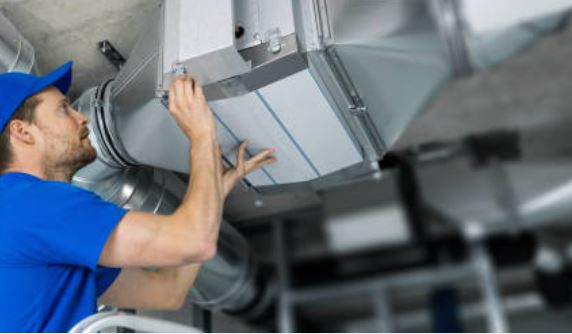Imagine your gas furnace as the heart of your home, which pumps warmth and comfort through the chilly winter nights.

One overlooked yet vital gas furnace part is the gas furnace transformer in the heating process. It’s a small yet vital part that ensures your furnace functions well, providing you with the warmth you crave. A bad transformer may mean repeat HVAC system issues and the need for furnace repair.

call 661-888-0248
Contact us 24/7 for HVAC services!
At HVAC Santa Clarita, we understand that the transformer might not be the most famous part of your furnace, but it’s crucial for its operation. We, therefore, delve into the gas furnace transformer, its common issues, how to identify them, and the importance of regular tune up. If you find yourself in need, rest assured that we are here to provide proper heating repair service, maintenance services to keep your Santa Clarita home cozy and warm.
Read on.
What’s The Work of Transformers on Furnaces?
Powering Your Furnace
The primary function of a gas furnace transformer is to step down the voltage from your home’s electrical system. Most homes receive power at a standard voltage of 120 or 240 volts, which is too high for the delicate parts within a furnace. This part reduces your home’s voltage to a safer level, typically 24 volts. This lower voltage is then used to power various parts in the heating system.
Enabling Control
In addition to reducing voltage, this part also provide a way to control when and how the furnace operates. They allow for the integration of control systems, such as thermostats, that regulate temperature settings in your home.
When your thermostat senses a drop in temperature, it sends a signal to the transformer, which, in turn, activates the heating system. This precise control is maintaining for maintaining a comfortable and even indoor environment.
Safety First
One of the most critical aspects of this part is their role in enhancing safety. This is because the lower voltage they provide is less likely to cause electrical shocks or fires in the event of a problem. This safety feature is important to any modern heating system, making sure you can keep warm without worrying about potential hazards.
Key Components and Functions
Now that we have a solid understanding of what transformers on a gas furnace are, let’s delve into their important parts and functions in more detail.
Primary and Secondary Windings
A gas furnace transformer consists of two sets of windings: the primary and the secondary winding. The primary winding is connected to your home’s electrical supply and is made of thicker wire with fewer turns. In the other hand, the secondary winding is connected to the furnace’s control circuit and has finer wires with more turns. This difference in winding characteristics allows the transformer to step down the voltage.
Iron Core
At the heart of every transformer is an iron core. This core transfers magnetic flux between the primary and secondary windings. When an alternating current (AC) flows through the primary winding, it generates a magnetic field in the iron core. Then, this magnetic field induces a voltage in the secondary winding, transforming voltage levels.
Enclosure
Gas furnace transformers are housed in protective enclosures. These enclosures shield the transformer from external elements, making sure it operates safely and reliably. They also act as a barrier to prevent accidental contact with the transformer’s electrical parts.
Terminals
Transformers come with terminal points where wires can be connected. These terminals facilitate the connection of the transformer to both the electrical supply and the control circuit of the furnace. Proper wiring is important in making that the transformer functions well and safely.
Transformer Types: Ignition vs. Control Transformers

Not all gas furnace transformers are created equal. They can be broadly grouped into ignition transformers and control transformers. Each type serves a unique purpose in your heating system.
Ignition Transformers
Ignition transformers provide the high voltage spark to ignite the gas in your furnace’s burner. This spark initiates the combustion process, which, in turn, produces the heat that warms your home. Ignition transformers are critical in making sure that your furnace starts efficiently and reliably.
Control Transformers
Control transformers, on the other hand, focus on powering and regulating the various control parts of your heating system. These parts include the thermostat, limit switches, and relays. Control transformers provide the low voltage power necessary for these elements, enabling precise control over your furnace’s temperature settings.
So, why do you need both of them? Well, they work together to make sure your gas furnace functions well. While the ignition transformer starts the combustion process, the control transformer ensures that your furnace operates at the right temperature and follows your heating preferences.
Signs of a Faulty Furnace Transformer

Frequent Circuit Breaker Trips
One of the clear signs of a bad transformer is the frequent tripping of circuit breakers. A bad transformer can cause electrical problems that overload your home’s circuit. This, in turn, triggers your circuit breaker to trip to prevent potential hazards. If you find yourself constantly resetting your circuit breaker, it’s time to investigate the health of your furnace transformer.
Dimming Lights
While it might sound like a scene from a scary movie, if you notice your lights dimming whenever your furnace kicks in, it’s a strong sign of a struggling transformer. A healthy transformer should give your furnace a stable and consistent power supply. Dimming lights suggest the transformer is not delivering the required voltage, causing your home’s electrical system to fluctuate.
Burning Smell
A sign that something might be wrong with your furnace transformer is the presence of a burning smell. If you detect a burnt odor in your furnace area, it’s crucial to investigate the issue immediately. A bad transformer can overheat and even catch fire, posing a severe safety risk to your home.
Failure to Start
The most evident sign of a faulty transformer is the complete failure of your furnace to start. If your heating system refuses to kick into action, the transformer is a likely suspect. In this case, it’s important to call an experienced HVAC professional to check and work on this issue promptly.
Contact HVAC Santa Clarita when you experience any of the above signs.
Why Do Furnace Transformers Fail
Furnace transformers and other gas furnace parts are not immune to wear and tear. They can fail for various reasons, and understanding these factors can help you prevent issues and extend the life of your transformer.
Age
Age is a significant problem that may lead to poor operation. Over time, the materials inside the transformer can degrade, and its efficiency can decline. Most transformers have a typical lifespan of 15-20 years. However, this range may vary widely depending on usage and maintenance.
Overloading
Furnace transformers are designed to handle a specific load. If your furnace or the electrical system places too much load on the transformer, it can lead to overheating and failure. Regular tune up can prevent overloading.
Lack of Maintenance
Like any other part of your heating system like the gas furnace blower motor furnace transformers require regular tune ups. Gunk, dirt, dust, and debris can accumulate inside the transformer, affecting its performance. Neglecting HVAC maintenance can result in a shorter lifespan and an increased risk of failure.
Power Surge
Voltage fluctuations in your home’s power supply can also affect your furnace’s transformer. These fluctuations can result from various factors, including issues with the power grid or faulty wiring in your home. Installing surge protectors and voltage regulators can help solve this risk(1).
Manufacturing Defects
In rare cases, transformers can have manufacturing defects that only become apparent after operation. These defects can lead to sudden failures. However, making sure you buy high quality transformers and having them professionally installed can minimize this risk.
Troubleshooting Gas Furnace Transformer Issues

If you suspect a problem with your gas furnace’s transformer, here are some steps you can take:
- Check for Burnt Out Fuses: If your transformer has burnt out, this might be evident through the furnace’s fuses. Replace them if necessary.
- Inspect for Overheating: Ensure proper ventilation and HVAC cleanliness especially around the transformer to prevent overheating.
- Voltage Testing: If you suspect voltage issues, consult a professional to test the transformer and make necessary adjustments.
If you cannot seem to figure this out, feel free to call us to talk to an expert for free. We will take you through gas furnace replacement and repair services to help fix the issue.
Why Choose HVAC Santa Clarita: At HVAC Santa Clarita
We are your local gas furnace repair, maintenance, and installation experts. We understand the details of gas furnaces and their vital parts, like the transformer. Furthermore, our team of experienced HVAC professionals is dedicated to keeping your home comfortable and cozy, especially during those cold Santa Clarita winters. We are here for you if you are looking for heating services including heat pump installation.
Trust us to:
- Thoroughly inspect your gas furnace transformer.
- Address any issues or perform timely repairs.
- Provide regular maintenance to extend the life of your furnace.
- Offer efficient and reliable furnace installation services.
Call us today for furnace installation Santa Clarita and other services including repair and maintenance.
FAQs
1. How often should I inspect and maintain my transformer?
Regular professional maintenance and check ups are crucial to ensure your furnace transformer’s safety, and efficiency. Therefore, it’s best to have it checked and serviced every year by a professional HVAC tech. This preventive measure can help identify and address potential HVAC problems before they lead to a complete failure.
2. How Do I prevent My Furnace System From A Power Surge?
Preventing your furnace from power surges is important to ensure its long-term functionality and to protect it from damage. Install surge protectors, schedule regular maintenance for your furnace system, and ensure your home’s electrical wiring is up to code and in good condition.
3. Can I Replace A Gas Furnace Transformer on My Own?
Replacing a transformer is a complex task that involves electrical work and safety factors to put in mind. It’s, therefore, best to leave this job to trained professionals. Attempting DIY can cause electrical hazards, damage to your furnace, or personal injury. Give us a call if you are in Santa Clarita and want your transformer replaced.
4. How Long Does A Gas Furnace Transformer Typically Last?
The period can vary depending on usage and other factors. However, on average, these transformers can last anywhere from 10 to 20 years(2). Regular tune up and repairs, if necessary, can extend their life.
Final Thoughts
Lastly, your gas furnace’s transformer may be a small part of the system, but it plays a crucial role in keeping your home warm and comfortable. You, therefore, have to understand its importance and how getting a regular HVAC tune-up can ensure the efficiency of your gas furnace. HVAC Santa Clarita is your trusted partner in making sure your furnace is in great condition. Don’t wait for the chill to set in; reach out to us today for all your gas furnace needs, and let us keep your Santa Clarita home cozy and warm.

call 661-888-0248
Contact us 24/7 for HVAC services!
Our Address is
HVAC Santa Clarita
26893 Bouquet Canyon Rd
Santa Clarita CA 91350
Opening hours
Monday 8 am – 8 pm
Tuesday 8 am – 8 pm
Wednesday 8 am – 8 pm
Thursday 8 am – 8 pm
Friday 8 am – 8 pm
Saturday 8 am – 8 pm
Sunday 9 am – 5 pm
References
https://www.ehow.com/facts_5974142_furnace-transformer_.html
https://www.researchgate.net/figure/Gas-in-oil-content-of-a-75-MVA-33-kV-furnace-transformer-until-collateral-damage_fig4_266877565
